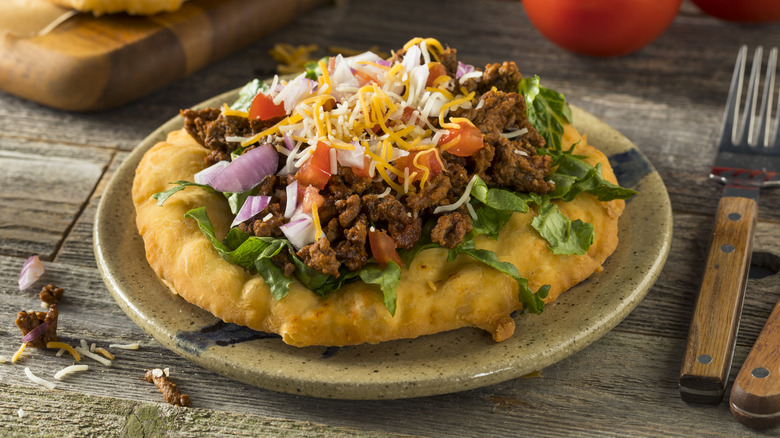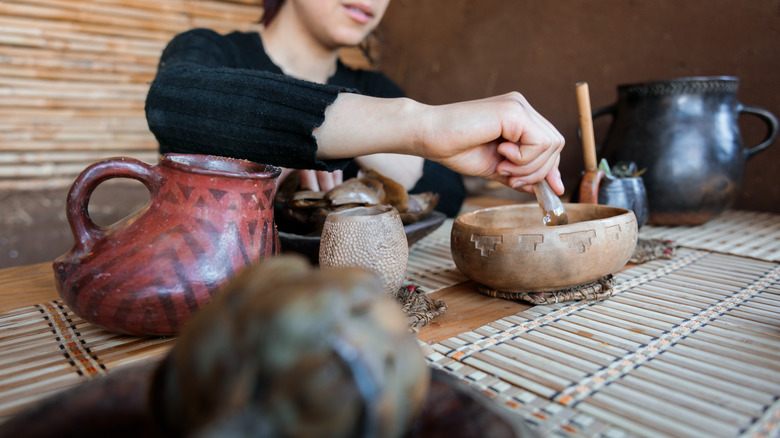New Native American Cuisine, Explained
It's hard to precisely define new Native cuisine, partly due to the diversity of culinary traditions among Indigenous peoples, but also because Native American chefs often interpret the phrase differently. Traditional foods usually play a major role in dishes, but some chefs opt to include foods introduced to Native Americans from first contact (meaning first contact with European settlers and the foods they brought with them) and beyond. Navajo tacos, one of the foods the Southwest is known for, are a good example of this fusion of elements. The dish features ingredients like beans, tomatoes, lettuce, chiles, and cheese, which are served atop Native American fry bread.
While the ingredients and preparations can vary greatly from chef to chef, the predominant goal of new Native cuisine is to preserve the ancestral foods and cooking techniques vital to Indigenous peoples. For example, preparations often include the Three Sisters — beans, squash, and corn — which were vital crops for many Native tribes in the Americas. New Indigenous cuisine also empowers Native American chefs to select foods and create recipes of their own volition in an effort to right historical wrongs inflicted on Native peoples.
The origins (and future) of new Native cuisine
Modern Indigenous cuisine has been shaped by the experiences of Native Americans throughout history. Traditional foods, such as the Three Sisters, come from the pre-contact era, while the first-contact period introduced Indigenous tribes to foods like wheat, watermelon, and apples, as well as livestock like sheep and pigs. The government-issue era, when Native peoples were forcibly removed from their land and relocated to reservations, involved insufficient rations of government-issued foodstuffs. Among these items was canned meat, the regular consumption of which has been cited in the high rates of diabetes among Native Americans living on reservations (via Reuters).
These injustices have driven many Native American chefs to reclaim their autonomy where cuisine is concerned. For instance, James Beard Award winner Sean Sherman (who's been credited with revitalizing Native American cuisine) develops recipes exclusively with ingredients that grow in North America, such as a dish comprised of salmon, crushed blackberries, and seaweed. Chef Crystal Wahpepah, known for being the first Indigenous chef to compete on the reality cooking show "Chopped," focuses on food sovereignty, which is the belief that people should have control over the food they eat, both in terms of quality and how much is available within a community. At Wahpepah's Kitchen, diners will find dishes like bison meatballs and wild rice fritters courtesy of chef Wahpepah. New Native cuisine is an emerging aspect of the culinary world, but more importantly, it's a way for Indigenous peoples to reclaim essential traditions.

